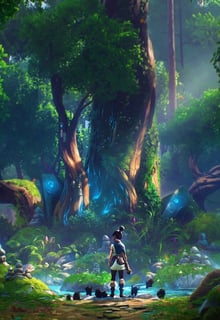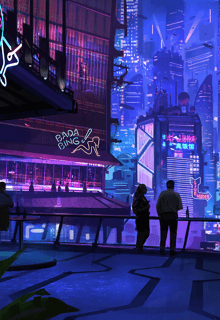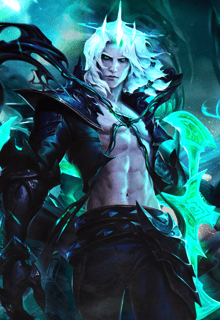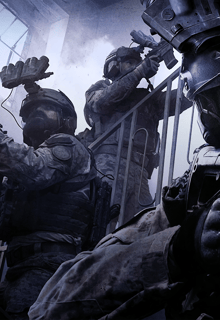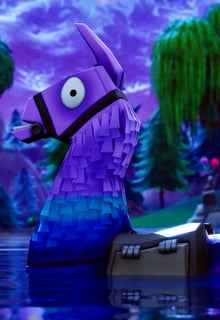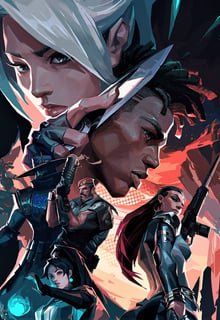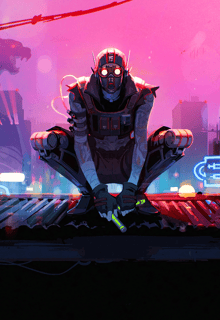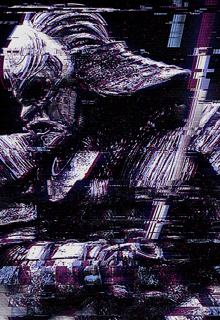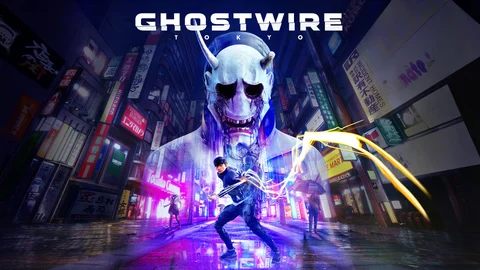Resident Evil creator Shinji Mikami and Tango Gameworks send us to an atmospheric ghost town on the PS5. The game can impress with its spirit, but at second it has some weaknesses. But let's have a first look together!
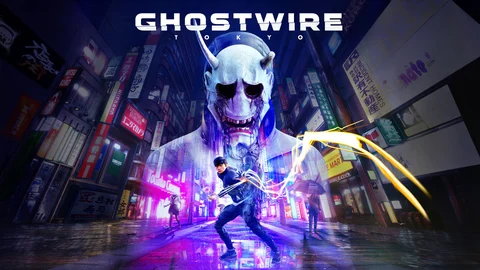
We remember back at E3 2019, when creative director Ikumi Nakamura introduced Tango Gameworks' new title, Ghostwire: Tokyo. Shortly after, Nakamura left the studio to forge her own plans. Ghostwire: Tokyo remained in development, however, and presented itself in the following years as a spooky action-adventure game in which players become ghost hunters in the middle of Tokyo. Expectations were and are high - not least because horror game legend Shinji Mikami takes a seat in the executive producer's chair. Now, three years later, the game is released, and we take a look at what ghost hunting has to offer in Ghostwire: Tokyo.
Tokyo, The City of Ghosts
Actually, the story of Ghostwire: Tokyo sounds not so bad: Villain Hannya covers Tokyo with a mysterious fog that turns all people into ghosts. Numerous demons make the streets unsafe. They resemble beings from real-world myths, Yōkai and urban legends from Japan. Only our hero Akito is spared. Conventional weapons alone can't do much against these “visitors”. You'll have to work with an unusual ally—the ghost of a skilled detective named KK - to hunt down those behind the disappearances in Tokyo and restore reality to the city.
A great Tokyo as an open world playground, dark Japanese folklore, powerful magic attacks from first person. Ghostwire: Tokyo captivates with exactly this mixture from the beginning of the game on the PS5. At first, you are sure: After The Evil Within, Tango Gameworks around Resident Evil guru Shinji Mikami has pulled off the next big coup, and the coming hours should be a feast of surreal, mystical creativity and magical gaming fun.
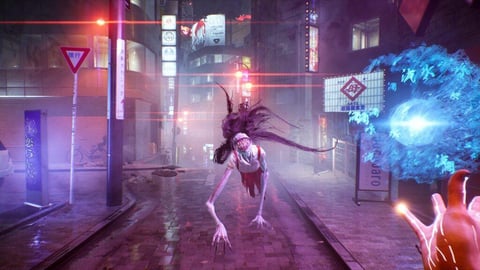
In first-person perspective, we make our way through the eerily atmospheric streets of Tokyo. We make use of our repertoire of abilities to prevent dangerous situations or to survive unavoidable dangers. As an action-adventure game, Ghostwire: Tokyo provides us with various options for moving through the open- world Tokyo. We can run quickly through the alleys, climb walls and facades or, if necessary, walk on silent soles. This is always a good idea when we meet the scary visitors. The scan, obligatory for most open-world titles, here called Ghost View, lets us assess the situation and make plans in dicey situations.
Fun, But Mediocre Fights
Thanks to KK's powers, we shoot like in any first-person shooter. However, Akito's fingers serve as weapons, from which we can cast three spells with a simple keystroke by the end of the game. Unfortunately, we are not offered more magical variety until the end. A variation of the fights is unfortunately not really in the books. Almost from the beginning, we do exactly the same thing until the bitter end besides blocking attacks. There is no dodge function for more dynamics, which makes the battles feel very static. Somehow, the combat passages remind us a bit of the DOOM remake from 2019, with the difference that they feel hopelessly ponderous and stiff in comparison. There is never a real flow that you would want for such battles. It's a real shame, because the idea of the battle system is actually good.
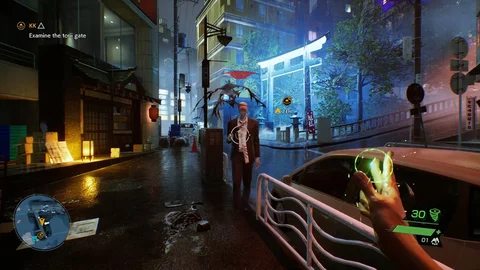
As in most other games, we equip ourselves with various gadgets and improvements to our own weapon repertoire, which allows us to use alternative approaches during the course of the game at least. We can also use talismans to temporarily trap, lure away or weaken visitors. With various prayer chains, which optionally strengthen attacks of different elements, for example, increase the effect of provisions or ensure that we are harder to detect.
Of course, the classic skill tree should not be missing. Here, we invest skill points and improve our movement and combat skills, as well as the capacities for various pieces of equipment. There are also a handful of boss fights in the game, which wow us only with great designs. However, the same cannot be said of the design of these confrontations. They suffer equally from the controls and also present themselves relatively uninspired.
The combat system of Ghostwire: Tokyo is overall a really fun and good one. We quickly get spells and a bow, and can alternatively sneak. We are sure that many action and stealth fans will have a blast with it at the beginning of the game. The big problem, however, is that we do almost the exact same thing over and over and over again until the end of the game. An issue that doesn't only affect combat.
Open-World With Impressive Tokyo Setting
Ghostwire: Tokyo is not only about fighting, but also about exploring the stylish Tokyo. At the beginning, we are still limited by the wavering haunted fog. We continuously push it back by cleaning nearby torii shrines. This is similar to typical open-world mechanics. The more we uncover the map, the more icons accumulate on our minimap, recording the location of activities, stores, side missions and the like. A familiar sight when you look into common open-world titles, and somehow, it gets tiring. Other titles like Breath of the Wild have proven that exactly the opposite can provide the necessary breath of fresh air. Unfortunately, Ghostwire: Tokyo seems a bit behind here.
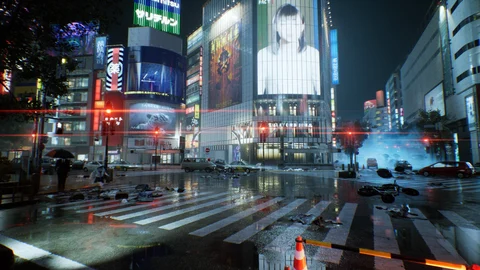
Visually, the title is particularly impressive in terms of the detailed presentation of Tokyo. Buildings bathe in the pretty glow of neon lights, everything reflected impressively in the puddles of the streets. Masses of clothes in the alleys and chaotically placed cars hint at the places from which people disappeared without a trace. Well-known landmarks, such as the Shibuya intersection, Shibuya Station or Tokyo Tower shine in a new light, all thanks to the more than successful eerie atmosphere. In addition, you'll find many collectibles in the streets, which provide an insight into Japanese folklore. In general, the game world looks coherent at first and second glance. Only after some time do you notice that many alleys and places are very similar. That's not a disaster per se, but don't expect fireworks of visual variety here. Japan and graphics fans will get their money's worth here, though.
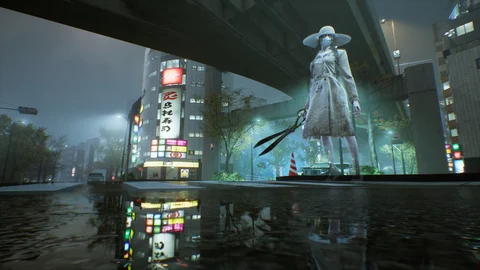
The same goes for the visitors who creep you out with various great designs. A small drop of bitterness: if you have seen the teasers beforehand, you already know every enemy type - except for the bosses. The familiar ghosts still appear in different versions in the course, but it remains with a good handful of basic visitors.
Ghostwire: Tokyo also has a great soundtrack. It captures the eerie atmosphere well and underlines it perfectly. All soundtracks convince with great performances. Audio wise, we can choose from various language versions, including Japanese, English and German.
Great Atmosphere With A Lot Of Missed Potential
It turned out to be a rock-solid game, and even though that's perfectly fine, this realization leaves us a bit disappointed. Mainly because it's strange circumstances that hold Ghostwire: Tokyo back in its potential. Paranormal creatures from Japanese folklore with supernatural abilities all sounds so promising. A great concept, but one that is not completely but severely limited by a mediocre combat system. This impression also runs through the rest of the gameplay, which doesn't do anything fundamentally wrong, but unnecessarily sticks to tiring open-world conventions.
The story also suffers from a narrative arc that unfortunately cannot be sustained. A potentially interesting story about dealing with loss unfortunately remains pale - just like its characters. Great staging, fresh visual ideas and concepts work against this, but don't make up for the shortcomings. This doesn't make Ghostwire: Tokyo a bad game. However, it could have been a title that stood out if there wasn't so much potential left by the wayside. Friends of the setting and similar genre representatives are welcome to take a look.


